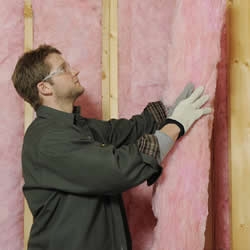Blanket (Batt and Roll) Insulation
Blanket insulation—the most common and widely available type of insulation and comes in the form of batts or rolls. It consists of flexible fibers, most commonly fiberglass. You also can find batts and rolls made from mineral (rock and slag) wool, plastic fibers, and natural fibers, such as cotton and sheep’s wool
Batts and rolls are available in widths suited to standard spacing of wall studs, and attic or floor joists. Continuous rolls can be hand-cut and trimmed to fit. They are available with or without facings. Manufacturers often attach a facing (such as kraft paper, foil-kraft paper, or vinyl) to act as a vapor barrier and/or air barrier. Batts with a special flame-resistant facing are available in various widths for basement walls where the insulation will be left exposed. A facing also helps facilitate fastening during installation. However, it’s recommended that you use unfaced batts if you’re reinsulating over existing insulation.
Standard fiberglass blankets and batts have a thermal resistance or R-values between R-2.9 and R-3.8 per inch of thickness. High-performance (medium-density and high-density) fiberglass blankets and batts have R-values between R-3.7 and R-4.3 per inch of thickness. See the table below for an overview of these characteristics.
